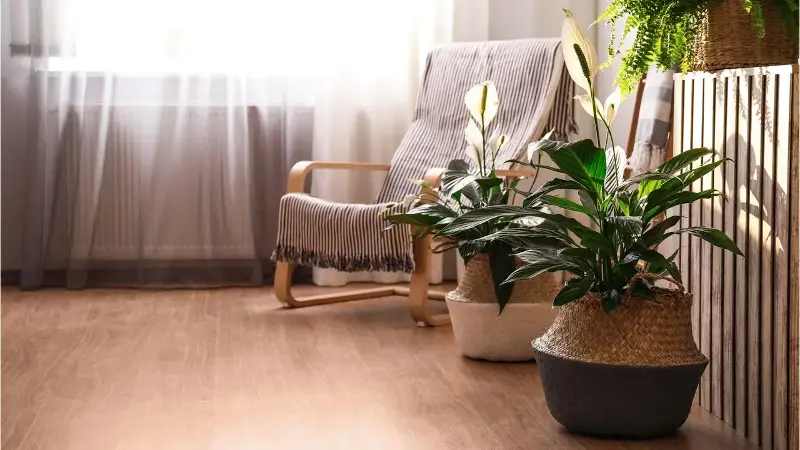
As if I didn't need another reason to be houseplant obsessed, I just discovered certain plants have cultural meanings and symbolisms. The best one for the current change of season? Peace lilies. They're thought to represent renewal and rebirth, perfect for manifesting goals for fall and winter, and giving interiors an uplift after summer.
I already view peace lilies as one of the best indoor plants, offering long-lasting elegant blooms and luscious green foliage. But, the appeal to grow one is enhanced by the fact peace lilies are associated with a whole host of positive and hopeful meanings. This is founded in different ancient and modern cultural practices, including Feng Shui.
If you ask me, it's the finishing touch to sprucing up interiors for fall and setting a good precedent for the last few months of the year. Here, I take a closer look at what peace lilies symbolize and why you should bring one into your home this season.
What do peace lilies symbolize?
When researching what peace lilies symbolize, I was faced with a number of cultural traditions that view this indoor flowering plant as a beacon of hope.
As a Feng Shui plant and in Eastern traditions, peace lilies are representative of peace, harmony, and purification. They are often used in areas of conflict to renew energy and ying-yang harmony. For this reason, you can place a peace lily in a living room, kitchen, and other family rooms where you gather with loved ones.
This sense of renewal associated with peace lilies is also attributed to it being one of the best air-cleaning indoor plants, even being listed in the well-known 1989 NASA study as one of the most effective houseplants for removing impurities from the air.
Adding a peace lily to your indoor garden is therefore a beautiful way to enhance your efforts to prepare your home for fall, maintaining clean energy through the new season.
In modern Western traditions, peace lilies are associated with resilience, thanks to their ability to bounce back from neglect. Even if your peace lily is turning yellow, some small adjustments (such as placing it in a brighter spot and reducing watering) can set it back on a healthy path with new growth.
This makes it a great plant for manifesting success when setting goals for the rest of the year, overcoming any challenges that you may face.
Of course, peace lilies are also often found in scenarios of funerals and memorials, where they are associated with tranquillity, peace (as their name suggest), and spiritual healing.
All of these meanings make peace lilies not only a valuable addition to your home for fall, but the perfect Thanksgiving gift for your host. You can even purchase a peace lily from Walmart and propagate your peace lily to share with others.
This peace lily measures 15-19" tall at the time of arrival. They can adapt to a range of light conditions, including low-light, making them versatile indoor plants to grow.
FAQs
What does it mean if your peace lily dies?
In terms of cultural traditions, a peace lily dying could represent an imbalance of harmony, as peace lilies symbolize peace and renewal in Feng Shui and other practices. By making some care adjustments, e.g. watering your peace lily correctly or moving it to a brighter spot, you can rejuvenate the plant and restore balance and positive energy in your home.
For some extra luck this season, consider also growing other lucky houseplants. You can even tune into your own personal connection to plants by incorporating your birth month houseplant in your indoor garden.
Shop peace lily care essentials:
Use this peace lily fertilizer to fertilize your peace lily through spring and summer. It's specially formulated to encourage long-lasting blooms.
This peace lily potting mix is well-draining and full of nutrients to support healthy peace lily growth.
These pruning scissors are the ideal size to prune peace lily leaves and remove flower stalks after your peace lily has finished flowering.
